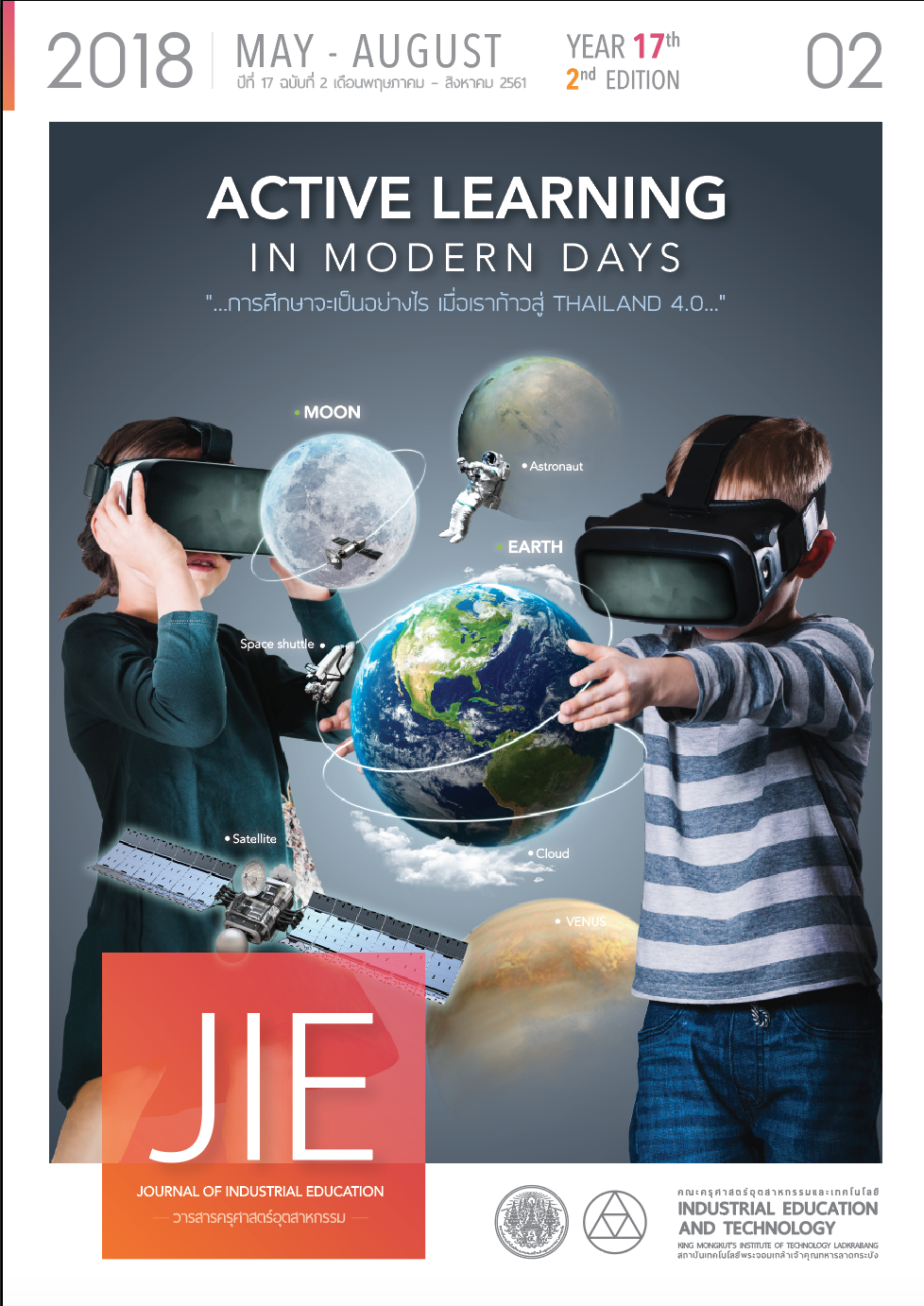A STUDY OF CONCEPTUAL AND PROCEDURAL KNOWLEDGE DEFICIENCIES IN PERMUTATIONS OF MATHAYOMSUKSA V STUDENTS
Keywords:
Students’ deficiencies in mathematics, Conceptual Knowledge, Procedural Knowledge, PermutationsAbstract
The purpose of this research was to study Mathayomsuksa V students’ deficiencies in conceptual and procedural knowledge about permutations. Using the stratified random sampling technique, the participants were 95 students who were studying in the second semester of the 2017 Academic Year from three schools run by the Office of the Secondary Educational Service Area District 9, Suphan Buri including Danchangwittaya school, Samchukratanapokaram school and Banharnjamsaiwittaya 1 school. The research instrument was an exam designed by the researchers consisting of 15 items of multiple choice, 9 items of completion and 2 items of essay. The data in this study were students’ responses on the exam. Definitions of conceptual and procedural knowledge were employed as a framework to analyzed and classified students’ conceptual and procedural knowledge deficiencies about permutations
The research findings revealed that the subjects showed their deficiencies in both conceptual and procedural knowledge about permutations. The deficiencies in conceptual knowledge were as follows: 1) selecting definitions, rules or formulas, 2) using definitions, rules or formulas and 3) explaining/giving a reason to each step of problem-solving process. The deficiencies in procedural knowledge included 1) using data, 2) lacking basic knowledge in algebra, 3) computing based on definitions, rules or formulas and 4) completing and sequencing of problem-solving process.
References
[2] Amporn Makanong. 2015. Khanitsat samrap khru matthayom. 2nd ed. Bangkok: Chulalongkorn University Press.
[3] Amporn Makanong. 2016. Thaksa lae krabuankan thang khanittasat: kanphatthana phua phatthanakan. 3rd ed. Bangkok: Chulalongkorn University Press.
[4] Usavadee Chantarasonthi. 2013. Kanpramoen khwamsamat thangkhanitsat. In Sakorn Boondoa (Eds). oundations and Methodologies of Mathematics Instruction. Unit 12. 2nd ed. Nonthaburi: Sukhothai Thammathirat Open University Press.
[5] Joersz, J. R. 2017. Changing the Way That Math is Taught: Conceptual Versus Procedural Knowledge [Electronic version]. Learning to Teach, 5(1), p. 1-4. Retrieved November 2, 2017, from https://utdr.utole do.edu/learningtoteach/vol5/iss1/4
[6] Khasha, K. H. 2014. Conceptual and Procedural Knowledge of Rational Numbers for Riyadh Elementary School Teachers [Electronic version]. Journal of Education and Human Development, 3(4), p. 181-197. Retrieved November 6, 2017, from https://dx.doi.org/10. 15640/jehd.v3n4a17
[7] Lee, P. Y. 2006. Teaching Secondary School Mathematics: A Resource Book. Singapore: McGraw-Hill.
[8] Sriraman, B. and English, L. D. 2004. Combinatorial Mathematics: Research into Practice. The Mathematics Teacher, 98(3), p.182-191.
[9] The Institute for the Promotion of Teaching Science and Technology. 2011. Khumukhru raiwicha phoemtoem khanitsat lem 4 chanmathayomsuksapithi 4-6. Bangkok: Sorkorsorkhor Ladprao Press.
[10] Pirom Poonsawat. 2016. A Development Achievement in Fraction for Grade 5 Students by Using the Skill Practice. Journal of Industrial Education, 15(2), p. 72-79.
[11] Suriya Rattanapoltee. 2002. Mathematics Misconceptions on “Permutation and Combination” of Mathayomsuksa 6 Students of Mathayom Wat Benchamabophit School. Master’s Project M.Ed. (Secondary Education), Graduate School, Srinakharinwirot University.
[12] Nutjira Busadee. 2010. Enhancing highschool students' achievement in permutation and combination through nontraditional word problems, sport problems and probabilistic games. Doctor of Philosophy (Science and Technology Education), Mahidol University.
[13] Grailurk Phonpa. 2008. Mathematical Laboratory Activity Packages to Prevent the Misconceptions on “Permutations” of the First Year Vocational Certificate Students. Master’s Project M.Ed. (Secondary Education), Graduate School, Srinakharinwirot University.
[14] Amporn Makanong. 1993. A diagnosis of mathematics learning deficiency of mathayomsuksa five students of Chulalongkorn Universtiy Demonstration School. Bangkok: Chulalongkorn University Press.
[15] Usry, R., Rosli, R. and Maat, Siti M. 2016. An Error Analysis of Matriculation Students’ Permutations and Combinations[Electronic version]. Indian Journal of Science and Technology, 9(4), p.1-6. Retrieved April 2, 2018, from https://dx.doi.org/10. 17485/ijst/2016/v9i4/81793
Downloads
Published
How to Cite
Issue
Section
License
"The opinions and contents including the words in papers are responsibility by the authors."
"ข้อคิดเห็น เนื้อหา รวมทั้งการใช้ภาษาในบทความถือเป็นความรับผิดชอบของผู้เขียน"



